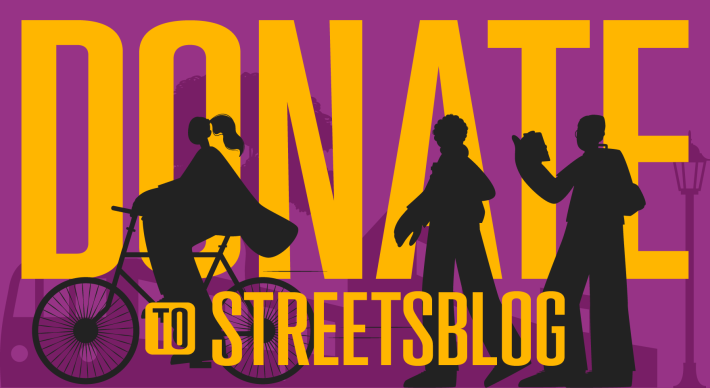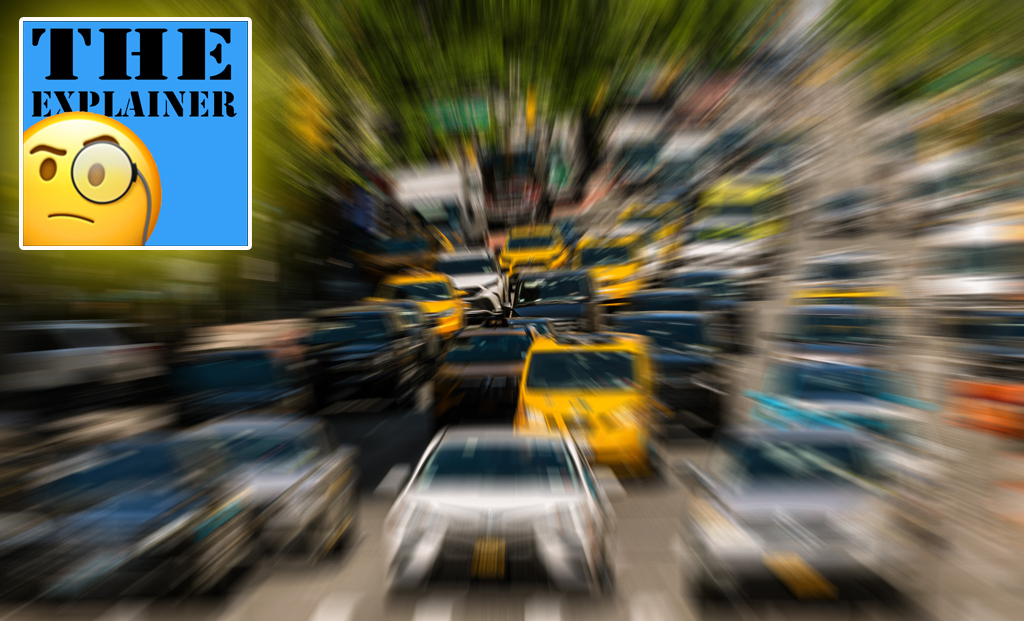
The Traffic Mobility Review Board's recommendations for a $15 daytime toll to enter Manhattan below 60th Street must now go before the MTA's board, which will vote next week to initiate the state process for enacting or raising tolls, which requires a 60-day public comment period followed by a final MTA board vote.
Congestion pricing is therefore on schedule to start sometime in the late spring or early summer, barring any legal obstacles: New Jersey has sued to stop the tolling program. The Garden State case lacks legal heft, and must stand against the MTA's extensive environmental review process, but anything can happen when judges get involved.
Meanwhile, there remain some loud local critics who need assuaging, too. Mayor Adams, for example, has called for more exemptions, which could neuter the effect of the tolls.
Very few New Yorkers commute from the outer-boroughs into the CBD, but MTA board members could still dole out exemptions in response to public pressure. Here's where things stand:
For now, the TMRB recommended a $3.75 night-time toll, a $24 to $36 charge for trucks depending on size, a 50-percent discount for motorcycles and a $5 rebate for passenger vehicles that enter Manhattan via any of the four existing, tolled bridges or tunnels. Taxi passengers will pay $1.25 more per trip to, from or inside the CBD, while Uber riders will pay $2.50 more per ride.
So what will happen now? Let the Explainer do what he does best:
Will this work?
The TMRB's toll plan as proposed will raise money for the MTA and reduce congestion in Manhattan's Central Business District by 17 percent and in the region at large by 9 percent, according to the MTA's calculations. Officials forecast a 1.5- to 2-percent increase in public transit use regionally — somewhere between 80,000 and 110,000 more bus ands train riders each day.
Transportation economist and congestion pricing guru Charles Komanoff shared his own rosy assessment in a column for Streetsblog on Friday — "a double-digit rise in average CBD travel speeds" and an 5 to 6 percent rise in speeds on roads leading into the city.
The toll "should be more than enough to do most of the lifting needed to generate the $1 billion a year in net revenue," Komanoff wrote.
MTA officials have not run a traffic analysis of the specific TMRB plan to the same extent they did for their initial environmental assessment of multiple toll scenarios, so it's not yet clear how the tolls would impact traffic in so-called "environmental justice" communities such as the South Bronx, according to Juliette Michaelson, the MTA's top congestion pricing official.
"The analysis that you saw on the [environmental assessment] was the product of literally months of running different computers for weeks on end," Michaelson said last week.
"We do not quite yet have the level of detail that was included in the environmental assessment, but we certainly will do that before the [MTA] board adopts the final toll structure."
A potential increase in emissions in the Bronx has been a key sticking point in the lead-up to pricing, and Mayor Adams still cites it among his concerns. The MTA earlier this year promised to invest over $130 million into emission-reduction efforts in the borough. (Streetsblog reached out to Rep. Ritchie Torres, who also raised concerns about The Bronx, but his office did not get back to us.)
The exemption fight
Congestion pricing could fail to work as promised if the MTA and TMRB follow the lead of Mayor Adams and other elected officials pushing for bottomless toll exemptions for city workers and others.
Every additional privileged exemption means a higher toll for everyone else in order to meet the MTA’s money-raising and congestion-reducing mandate. That hasn’t stopped some city leaders, including the mayor, from clawing for more perks for their constituents who use cars to get to the most transit-rich part of the globe — many of whom do it because of parking perks, as Streetsblog reported.
The TMRB’s plan called for no exemptions beyond those specifically required by the 2019 state congestion pricing law or agreed to in the environmental assessment process: New Yorkers who make less $50,000 per year or are enrolled in an income-based assistance program like SNAP get half-priced tolls once they’ve surpassed 10 trips in a single month; “qualified persons with disabilities” (in vehicles with government-issued disability plates or vehicles "owned or operated by organizations that provide transportation to people with disabilities") will be entirely exempt. And drivers who live in the CBD and make less than $60,000 per year will also receive a state tax credit.
Hizzoner has yet to endorse the TMRB's recommendations. Last week, he called them "beginning of the conversation" with "communities to deliberate and to make a determination of who is going to be exempted." (It's worth pointing out that the MTA has up to now had hundreds of open meetings on congestion pricing, collecting something like 28,000 total comments from the public.)
Adams could use his representation on the MTA board to put pressure on the final outcome, but he's currently down one board rep after the resignation of Sherif Soliman in September — not a great starting position for influence.
TMRB members rightly recognized the potential domino effect that could result from giving exemptions to even one special interest constituency.
“For every exemption [that] is granted it not only forces up the base toll on everybody else, but also more exemptions that are granted — the more other people will say, ‘You’ve granted an exemption to them, you didn't grant the exemption to me,’” TMRB Chair Carl Weisbrod said last week.
The TMRB “gave a lot of thought to” some of the 120-plus requests for exemptions, Weisbrod said — including the question of medical exemptions.
“A lot of people who use those hospitals do have the funds to pay for a congestion charge and those that don't, generally speaking have kind of public coverage that would be cover this cost, including Access-a-Ride,” he said.
Does John Samuelsen have a point about the MTA not adding service?
The biggest drama in the immediate wake of the TMRB's announcement came when the mayor's single appointee to the panel, John Samuelsen, resigned in anger, claiming that congestion pricing is a sham because the MTA has allegedly not added enough new service to incentivize drivers out of their cars.
Samuelsen reiterated those points during an interview with ABC7, whose news team took the premise one step further by asking if New York City "has enough transit" to take on the additional riders.
"It's absolutely foolhardy ... It's moronic," Samuelsen told the station. "You don't just whip them, and say, 'You're going to get hit with a toll,' and expect them to stuff themselves within the existing transit and bus system."
But Sameulsen's criticism falls apart if you consider how we got here: During the 2017 "Summer of Hell," the subway system's age showed in notable and often dangerous ways: Riders found themselves constantly besieged by delays; a train derailment injured over three dozen people in Manhattan. It became obvious that disgraced ex-Gov. Andrew Cuomo had let the subway system fester while pouring beaucoup bucks into road projects like the new Tappan Zee Bridge that he named after his dad.
The MTA needed serious investment in both maintenance and modernization — both in terms of its antiquated signal system and dire lack of wheelchair access. Officials crafted a $40-billion plan to fix the system, and a way to pay for it: Congestion pricing — which tolls the car-driving minority of commuters whose trips add congestion, pollution and other negative externalities, to fund the majority of commuters whose transit trips have a comparatively tiny environmental impact.
"The goal of congestion pricing is to generate the revenue for a capital program for the MTA that will help the vast majority of people who use public transit or expand access to people who can't use it today," Weisbrod said.
Should the MTA be more ambitious about service expansion, both in terms of scheduling more trains and buses and building more transit? Emphatically, yes.
In fact, the MTA is already doing that: Since 2019, the authority has brought wheelchair accessibility to dozens of stations, opened a new rail terminal for the Long Island Rail Road, and begun the signal work that congestion pricing will eventually help fund. This year's state budget also reduced headways on a number of train lines, fulfilling a key request of transit advocates.
Samuelsen's claim that the influx of up to 110,000 new transit riders will overwhelm the current system is, as he would say, "moronic." Anyone who rides the transit system can see what ridership numbers say: Trains are still relatively empty compared to before COVID, down around 30 percent compared to 2019.
Express buses to the outer boroughs — in which the MTA should invest, according to Samuelsen — are 60 percent empty at rush hour post-pandemic, according to the MTA. The agency spent more than $11 per express bus rider in 2019 — more than any other transit mode in the city, according to the Citizens Budget Commission, including the widely panned NYC Ferry. There's little reason to invest more in such a low-demand service.
Two better ways policymakers could help non-drivers: speeding up existing bus routes by adding bus lanes and eliminating other road obstructions, and making it safer to use bikes and other micro-mobility through safe street redesigns. But those things are the job of City Hall, and advocates warn Mayor Adams has failed so far to rise to the challenge.
Instead, the pace of bus lane expansion under Adams slowed dramatically this year as the mayor canceled projects and failed to put forward new proposals. In public comments, the mayor has dismissed installing bus lanes as goal altogether, telling DOT employees, "My legacy is not how many bus lanes I do."
In the CBD itself, Hizzoner called off a busway planned for Fifth Avenue and launched an outreach process that will likely take years to determine whether buses can more priority on the busy Midtown strip.
"Mayor Adams has failed to keep any of his promises when it comes to speeding up buses," said Riders Alliance spokesman Danny Pearlstein.
Preventing toll cheats: Mission Impossible?
New York has a horrendous toll cheat problem, as Streetsblog has repeatedly and extensively documented. Fake plates, expired plates, defaced plates, covered plates, you name it — they're everywhere in New York City, and officials are only beginning to get control of the problem. The city's speed cameras could not read 7 percent of plates in August, 2022. The MTA will have to factor all of that into its toll collection system to make sure everyone pays the fare fairly.
Ensuring the toll is cheat-proof probably comes down to the MTA and NYPD's ability to conduct effective enforcement that deters violators or plate-defacers, Weisbrod said.
"I think it's recognized by all that enforcement is very important here," he told reporters last week.
Close watchers of the MTA and transportation policy agreed.
"Part of it is technology, and part of it is enforcement," said Lisa Daglian of the MTA's in-house Permanent Citizens Advisory Committee. "That enforcement is online, it’s on the streets. There should be real penalties.”
Members of the Riders Alliance will rally in support of congestion pricing on Tuesday morning at 11 a.m. in Union Square.
— With Dave Colon






